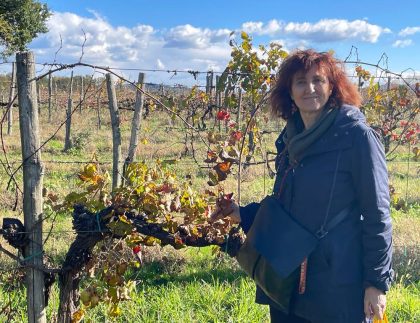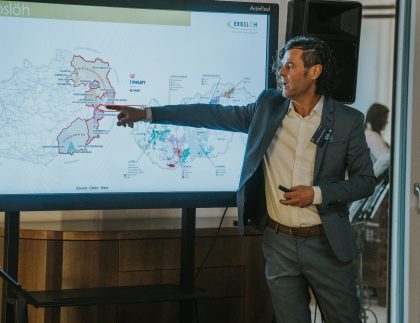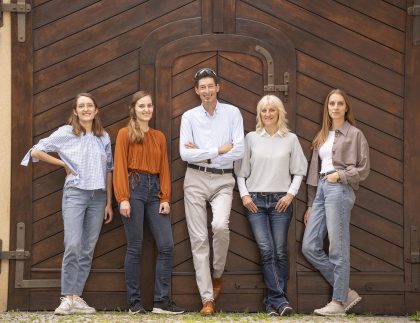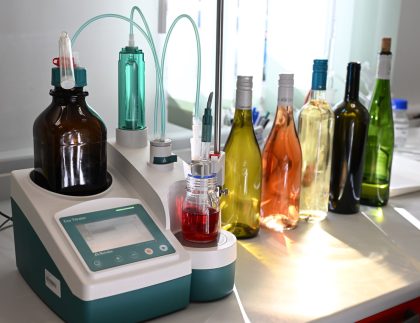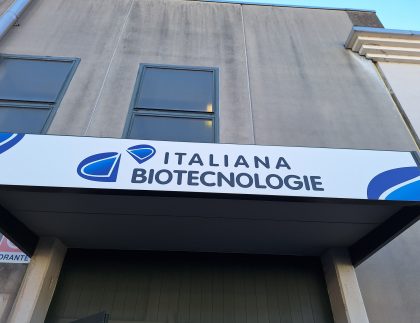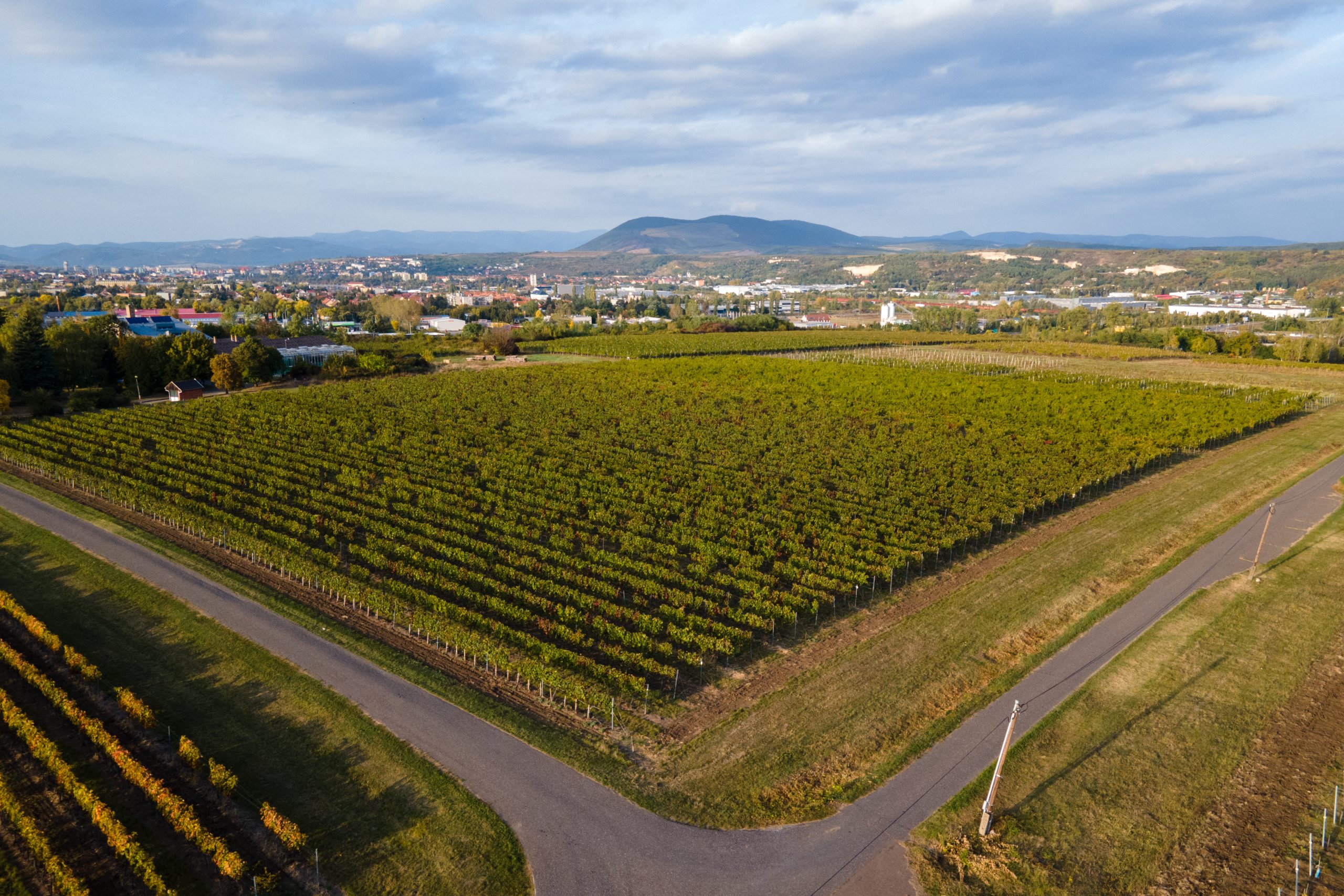
What motivated you to return to Eger and take up the position of Director of the Wine Estate of Eszterházy Károly Catholic University?
I spent the last 8-9 years in Tokajhegyalja. The work I did there was similar to what I’m doing now. I had to be present in many different places, such as Budapest and Tokaj, so Eger served as a starting point for my travels. But as the years went by, I felt more and more homesick, not only to live here but also to work here. So, in the summer of 2024, I was delighted to join the university’s professional team and was invited to take up the position of Director of the Estate. I have a deep love for the Eger wine region and it’s a cause very close to my heart.
Have you always been involved in viticulture?
As a two-year-old sitting next to my grandfather on the MTZ tractor’s toolbox, I developed strong family ties to agriculture. My other grandfather was the wine director of Egervin Wine Factory until 1997, and I learned and experienced a lot alongside him too. However, as a teenager, I wasn’t attracted to viticulture and winemaking and chose a career in finance. But I soon realised that the office world wasn’t for me, so in 2010 I began studying viticulture and oenology engineering.
If it is a university estate, we should also talk about university wines. What options do wine lovers have – to choose from?
Our winery offers two main wine collections: Studium and Academia. The Studium range is inspired primarily by our students and has a lighter, fruitier flavour profile. The Academia collection consists of classic Egri Csillag and Egri Bikavér, and our specialities include late-harvest sweet wines. Both wine families are of high quality but target different tastes.
Wine is the end product of the work on the estate, but what goes on behind the scenes? What work goes on in the background?
Viticulture and oenology education and research have a centuries-old tradition in Eger. A significant boost to winemaking education and research came in 2016, when the former Viticulture and Oenology Research Institute was integrated into the University. And a project launched in 2017 enabled to set up the Centre of Excellence for Vine and Wine Research and Development. As a result of the work started here, Eszterházy Károly Catholic University is now the most successful viticulture and oenology research centre of excellence in the country, based on its international publication record. This foundation paved the way for the first successful major project of the new grant cycle within the National Research, Development, and Innovation Office’s Thematic Excellence Program. Thanks to this, the University is currently engaged in multiple international viticulture and oenology research projects. I’d like to join this wide-ranging and intensive professional work, for which the vineyards of Kőlyuktető provide a privileged professional setting. It’s crucial for the university to support the domestic viticulture and oenology sector through its research. The goal is to address current challenges, provide long-term knowledge and solutions for professional development, and offer guidance to wineries. One of my key responsibilities is to ensure that the research conducted here supports the winemakers and grape growers of the Eger Wine Region.
How does the university help students gain practical experience on the estate?
The university offers a Viticulture and Oenology BSc programme, where students can do practical work on the Kőlyuktető estate. So they can participate in a number of winemaking and viticultural processes, gaining hands-on experience. In addition, the institution’s art courses are also outstanding, so the Studium wine labels featur works by art students selected through a competition each vintage. This year, 37 entries were received, evaluated and awarded by a professional jury.
What grape varieties and special winemaking techniques do young people work with on the university estate?
The grape varieties include the most common and most important varieties in Eger, such as kékfrankos and kadarka, as well as varieties that are specific to Eger or that have been bred here, but are not particularly widespread in the wine region or elsewhere. I believe that with the right winemaking techniques, we can produce exciting and highly enjoyable wines from these varieties.
What innovations are planned for the estate in the near future? How do you see the future of the winery in the next 10-20 years?
There is excellent work going on in the vineyards and cellar at Kölyöktető, but there is always room for improvement in terms of quality. I strive to ensure that our wines represent the highest possible standards, and that we provide the best environment for students and researchers to become highly skilled professionals and conduct high quality research.

